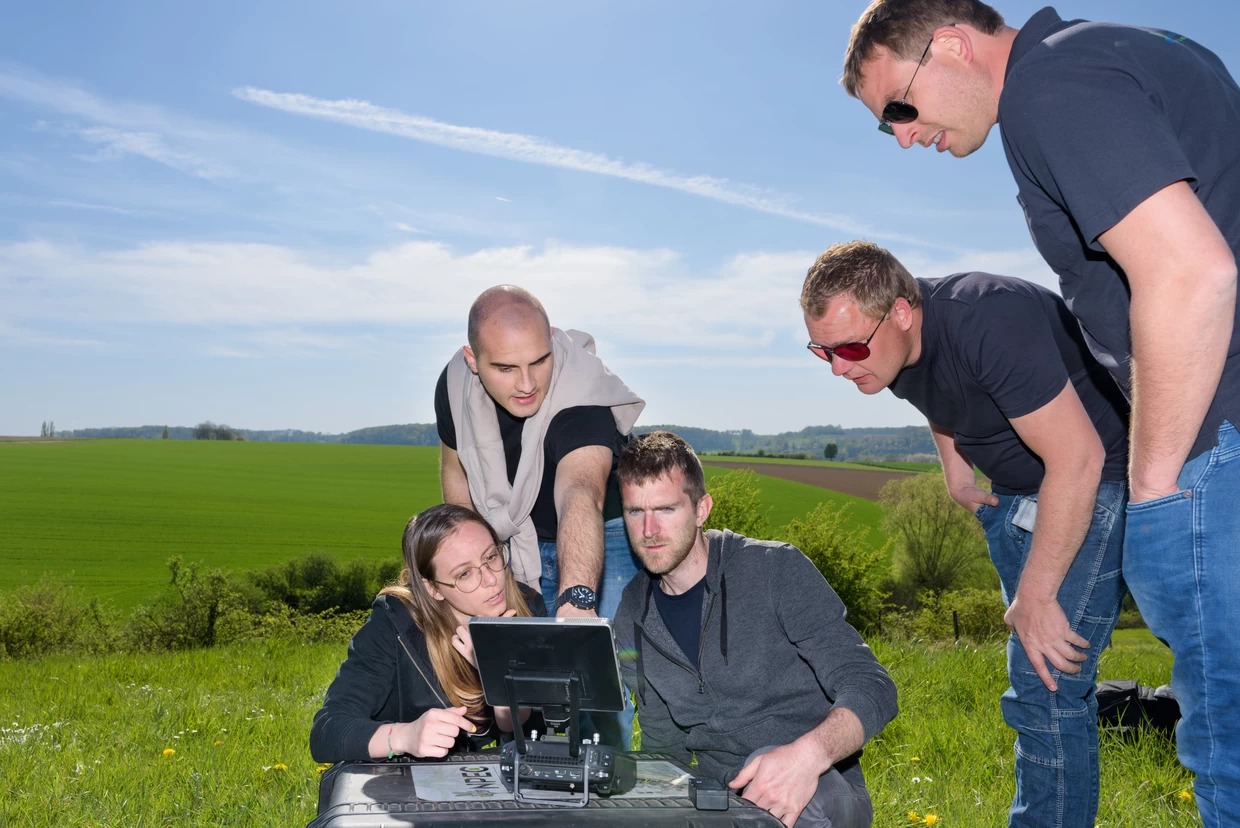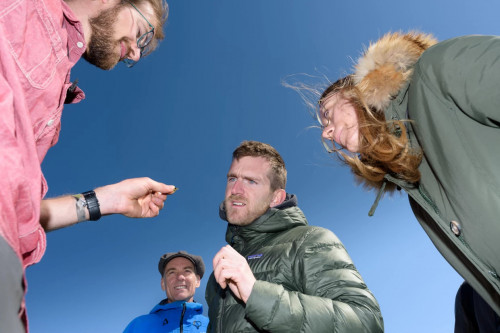A newspaper article containing several opinions and observations from SHOWCASE project partner Wageningen University (WU), other universities, and organisations, such as the iDiv Institute in Leipzig and the Insects Knowledge Center, was published in the daily morning newspaper Volkskrant, discussing the new ways in which WU uses remote-controlled drones to estimate flower availability and, naturally, the number of flower-visiting insects in grasslands, specifically in South-Limburg Geuldal area. In addition to this topic, the article debates whether insect populations are declining.

Photo: Researchers view the images that the drone collects in the Geuldal (Image: Sas Schilten)
Several studies have shown that flower-visiting insects, like bees, butterflies, and hoverflies, have significantly declined in the United States and Germany. But can that trend be seen in the Netherlands as well?
The answer is not straightforward, although most experts are leaning towards a similar conclusion because of the fragmentation of Dutch nature reserves, the high nitrogen deposition, and the frequent use of pesticides. Theo Zeegers of the Insects Knowledge Center, several universities, and volunteers have counted hoverflies in Veluwe, moths near Tilburg, and ground beetles on heathlands in the province Drenthe, and observed pronounced declines. Nevertheless, these results do not automatically mean that Dutch insect populations will collapse, states biologist Roel van Klink of the German biodiversity institute iDiv in Leipzig, who contributed to ground beetle and moth research and regularly uses insect monitoring data in his research. The matter is more complex, especially when taking into account the variable weather conditions, the changes in the nature reserves themselves, the inability to count all insects and measure nature itself, and the changeability of landscapes.
David Kleijn, SHOWCASE project coordinator, generally agrees with this opinion that we should be careful to conclude that insect populations are on the verge of collapse. With respect to an often cited pressure on bee populations, pesticides, he argues that, while “pesticides undoubtedly have a negative influence on insect populations […] the decline started already before the massive spraying of agricultural pesticides suggesting that the problem may be more complex than this one factor".
Hence, an underlying necessity to use various methods and approaches, such as UAV and drone images, to monitor flower cover and flower-visiting insects. Such methods were developed by two studies led by Michele Toressani, and can potentially be used for standardised large-scale monitoring of flowering plants and insect biodiversity, particularly bees, in agricultural landscapes. One study employs UAV technology to assess flower cover and estimate vegetation properties critical for bee habitat assessment, while another explores the Height Variation Hypothesis (HVH) using LiDAR data and UAVs to understand bee diversity in grasslands. Both studies confirm the potential of UAV technology for standardized monitoring and assessment of flower diversity and its impact on bee populations.
Read more about researchers’ conclusions on declining insect populations here.
Photo: Researchers look at an insect in the Geuldal (Image: Sas Schilten)
